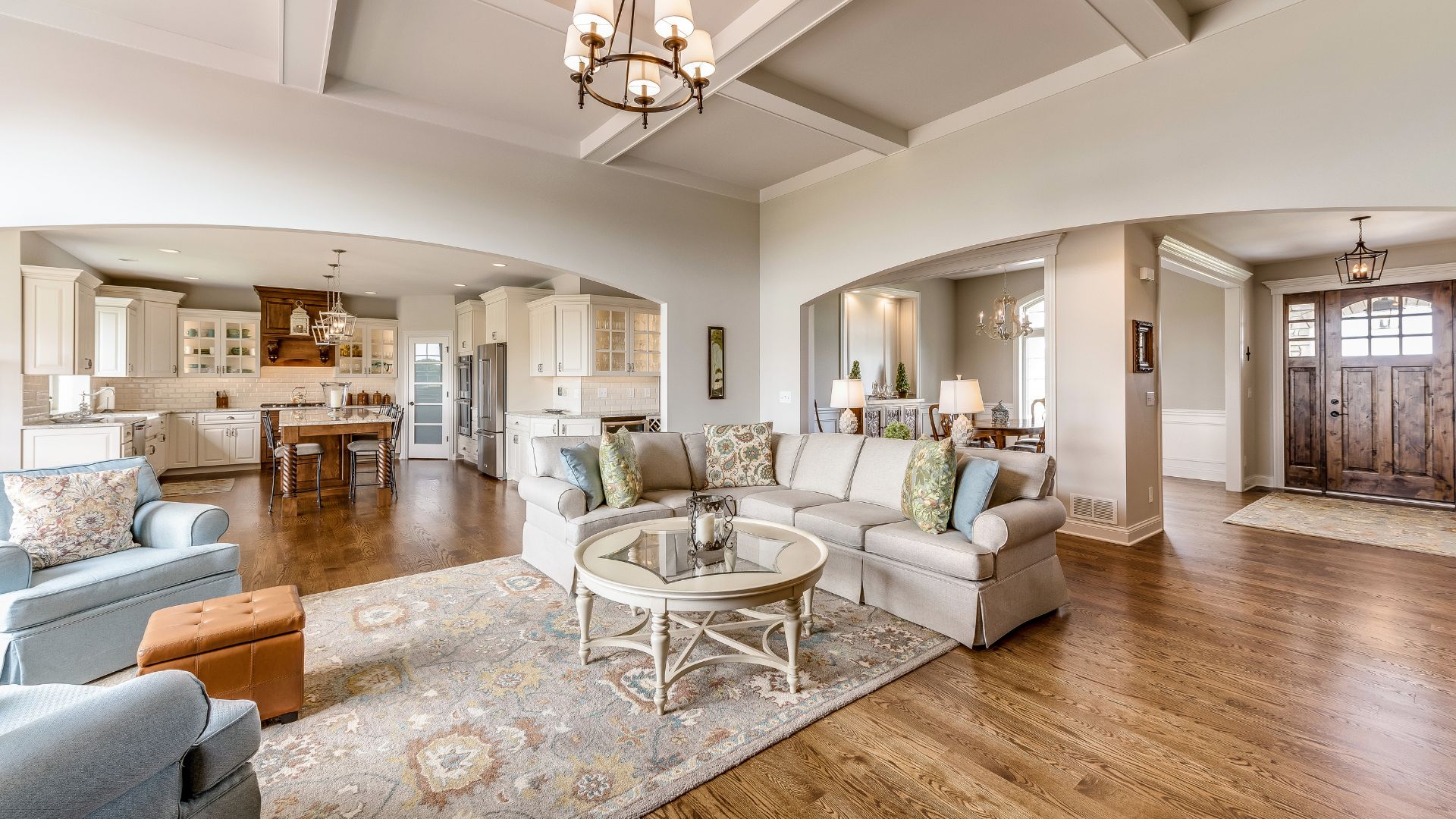
Introduction to Color Matching in Open Floor Plans
When you step into a space where the colors flow harmoniously from one area to another, it creates a seamless and inviting environment. This is especially true for open floor plans, where the lack of walls means that colors need to be thoughtfully coordinated across different functional areas. Whether you’re considering hiring interior painters or planning a DIY refresh with the guidance of expert painters in Temecula, understanding color matching is key.
Understanding the Basics of Color Theory
Before diving into specific techniques, let’s refresh the basics of color theory. Colors can influence mood and perception, so choosing the right palette for your open floor plan is crucial.
- Primary Colors: Red, blue, and yellow – the building blocks.
- Secondary Colors: Green, orange, and purple – created by mixing primaries.
- Tertiary Colors: The result of mixing primary and secondary hues.
Think about how these colors interact when they are placed side by side. Do they complement each other or create tension?
Starting With a Neutral Base
In open floor plans, starting with a neutral base can be a wise choice. Neutrals like beige, gray, and whites are versatile and allow for easy transitions between living spaces.
- Why Neutrals Work: They serve as a calming backdrop, making the space appear larger.
- Incorporating Color: Use accent colors to add depth and interest.
Using Color to Define Different Areas
Even without walls, it’s possible to define spaces using color. This technique helps to visually separate different areas without physical barriers.
- Dining Area: Maybe a bold color to stimulate appetite and conversation.
- Living Area: Softer, calming shades for relaxation.
- Workspace: Energizing colors like greens or blues to enhance focus.
Flow with Accent Colors
Accent colors can tie a space together. Choose two to three shades that complement the base color and use them throughout the space in various elements like rugs, cushions, and art.
- Consistency is Key: Repeating accent colors creates a sense of continuity and flow.
Textures and Patterns
Don’t forget that textures and patterns also play a role in color matching. They can add visual interest and depth, making the space more engaging.
- Mix and Match: Combine different materials like wood, metal, and textiles.
- Pattern Play: Use patterns sparingly to avoid overwhelming the space.
Lighting Matters
Lighting can dramatically affect how colors look in a space. Different types of lighting can alter the appearance of colors, so it’s important to consider natural and artificial light.
- Natural Light: Observe how colors change throughout the day.
- Artificial Light: Choose bulbs that enhance the room’s colors.
Testing Colors Before Committing
Always test paint colors in different areas of the room and at different times of the day. This will help you see how the color truly looks in the intended environment.
- Sample Patches: Apply large swatches of paint to see the effect.
- Observe Changes: Notice how different lighting conditions affect the appearance.
Color Psychology
Colors have the power to evoke emotions and affect mood. Use this to your advantage by selecting hues that reflect the ambiance you want to create.
- Reds and Yellows: Warm and inviting, perfect for kitchens and dining areas.
- Blues and Greens: Calming and serene, ideal for bedrooms and bathrooms.
The Role of Furnishings and Decor
Furniture and decor also contribute to the overall color scheme. Choose items that complement the wall colors and overall design theme.
- Coordinate Furniture: Match wood tones and upholstery with your color scheme.
- Decor Accents: Add pops of color with accessories like vases and paintings.
Consulting Professional Painters
Sometimes, it’s best to consult professionals. Interior painters, especially those experienced with open floor plans, can offer valuable insights and advice.
- Wall Works: Call us at 951-695-5588 for expert advice and painting services.
Following Trends with a Grain of Salt
While it’s tempting to follow the latest color trends, it’s more important to choose what works best for your space and reflects your personal style.
- Timeless Over Trendy: Opt for colors that you will love for years.
Balancing Act: Warm vs. Cool Tones
Achieving a balance between warm and cool tones is essential for a cohesive look. This balance can help ensure that the space feels harmonious and welcoming.
- Mixing Tones: Find the right mix that suits your style and home’s natural light.
The Impact of High-Quality Paint
Invest in high-quality paint to ensure the best finish and durability. High-quality paint offers better coverage and richer color.
- Why Quality Matters: Long-lasting results and better aesthetics.
Continuous Learning and Adaptation
Lastly, remember that color matching is not a one-time task. As your taste and lifestyle change, so might your color preferences. Keep experimenting and adapting to keep your space feeling fresh and vibrant.
Conclusion: Bringing It All Together
Mastering color matching in an open floor plan takes patience and creativity, but it’s well worth the effort. By following these techniques, you can create a space that feels cohesive, balanced, and perfectly suited to your lifestyle. Remember, Wall Works is here to help with all your interior painting needs. Just give us a call at 951-695-5588.
FAQs About Color Matching in Open Floor Plans
- What are the best neutral base colors for an open floor plan?
Neutral colors like soft grays, warm beiges, and clean whites are ideal as they provide flexibility and allow for easy color integration.
- How can I use color to make a small open floor plan feel larger?
Lighter colors can make a space feel larger and more open. Use cohesive colors throughout to enhance this effect.
- What should I consider when choosing paint for an open floor plan?
Consider the quality of paint, how the colors work under different lighting conditions, and how they flow from one area to another.
- Can I mix different styles and colors in an open floor plan?
Yes, but it’s important to maintain a consistent color palette to keep the space cohesive.
- How often should I change the color scheme in my open floor plan?
There’s no set rule, but refreshing your space every few years or when you feel the need for a change can keep your home feeling fresh and modern.
Ready to transform your open floor plan with stunning color matches? At Wall Works, we specialize in bringing your vision to life with professional interior painting services. Call us today at 951-695-5588 to schedule your free estimate and let us help you create a seamless and inviting space!

